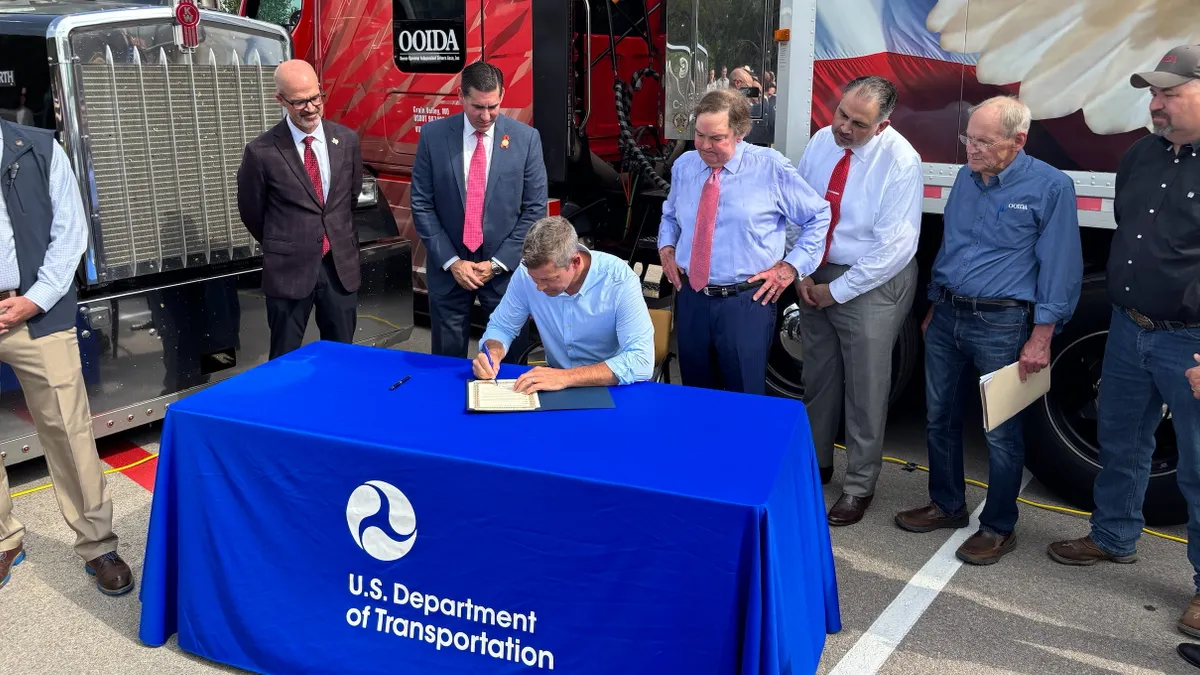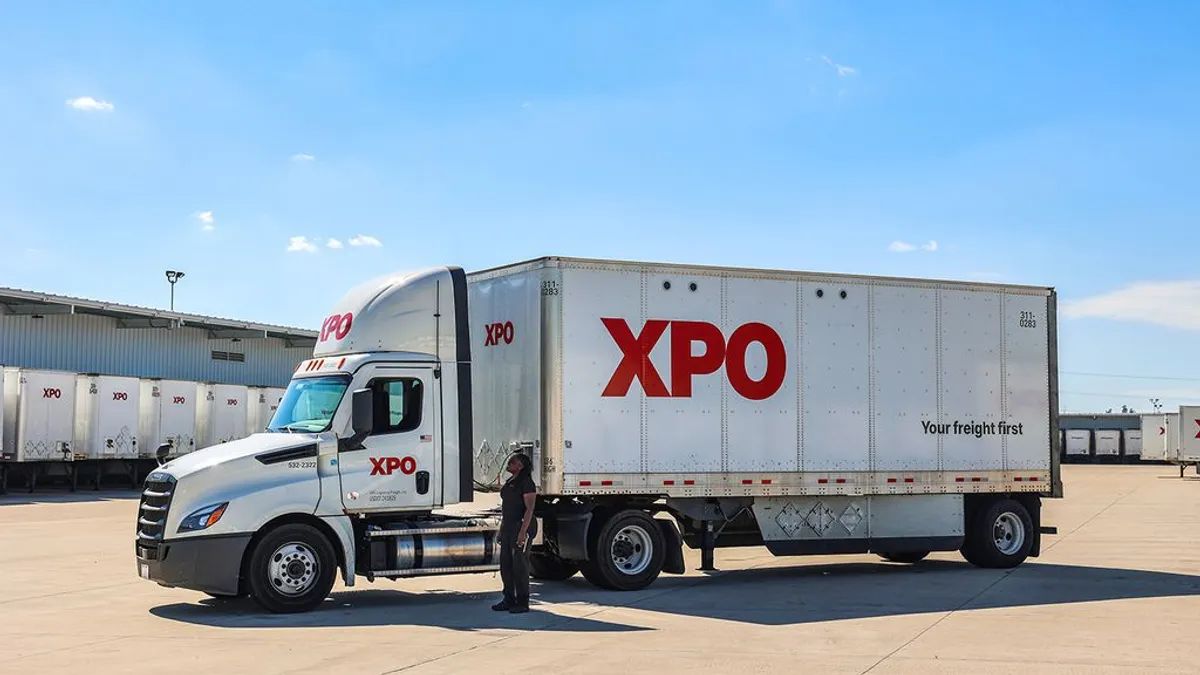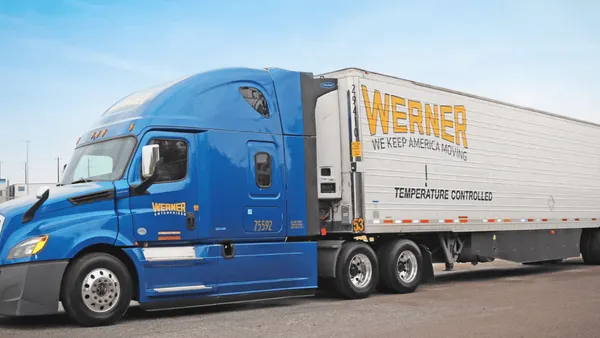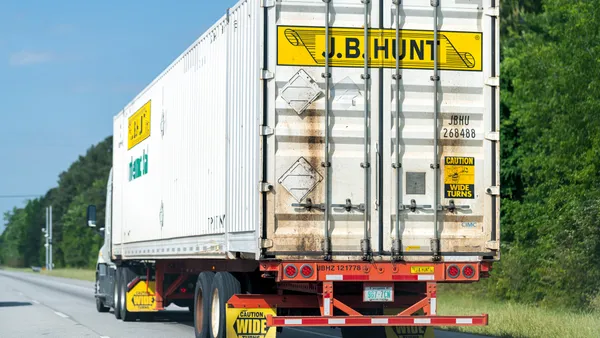Dive Brief:
- FedEx is ramping up its pursuit of more profitable shipments and greater operational efficiencies as a surge in home delivery demand over the past two years has cooled off, executives said on the company's Q4 earnings call.
- "My strategy is pretty straightforward," Raj Subramaniam said in his first earnings call as CEO. "The number one element we talked about is revenue quality. And again, we will comment more about that. The second part of the strategy is going to be to improve operating margins in each of our operating companies."
- FedEx Freight's operating profit grew 67% YoY in Q4. CFO Mike Lenz said the results show Freight's focus on revenue quality and profitable share growth, adding that LTL providers have gained greater pricing discipline in recent years and are careful not to overbuild capacity.
Year-over-year change in FedEx KPIs, per division
| FedEx Express | FedEx Ground | FedEx Freight* | |
|---|---|---|---|
| Average daily volume growth | -11% | -6% | -4% |
| Revenue per package growth | +20% | +11% | +28% |
Note: FedEx Freight's metrics are average daily shipments and revenue per shipment.
Dive Insight:
Ahead of FedEx's investors meeting on Wednesday, Subramaniam teased a playbook for the company's future. The strategy is in line with the operating principles established in 2020 while he was COO: Compete collectively, operate collaboratively and innovate digitally.
FedEx's ability to bundle the services of its different companies together, such as its parcel offerings and LTL capabilities through FedEx Freight, will help it compete as consumers shift more spending from goods to services, Chief Customer Officer Brie Carere said.
"If you've got a one-stop shop, like FedEx with an LTL provider with national coverage, it works really well," Carere said. Rival UPS sold its Freight segment in 2021.
Subramaniam, who is also FedEx’s president, hinted on the call at further collaboration between FedEx Express and FedEx Ground. FedEx historically kept these two operating companies separate until 2020, when it announced Express would contract with Ground for some parcel deliveries. The e-commerce boom and subsequent emergence of more day-definite packages in both networks gives FedEx "the opportunity to optimize across" the different companies, according to Subramaniam.
Part of FedEx's digital innovation push is to make greater use of the data provided by the millions of packages flowing through its network each day. Carere touted the ability of the company's FedEx Surround platform to improve supply chain visibility for large customers. This includes having the tools necessary to reroute shipments around disruptions like weather and port congestion.
"We are adding new capabilities onto this tool to allow us to intervene for our healthcare customers so that if there is a service disruption, we can intervene and re-ice or put something in a cooler," Carere said.
FedEx is one of several delivery providers to report business-to-consumer volumes shrinking or slowing after demand reached dizzying heights in 2020 and 2021. Carere said fuel surcharges were FedEx's top driver of revenue quality for Q4 in a time of elevated gas prices.
UPS, like FedEx, made up for its volume drop with higher per-package revenue. Amazon is also targeting greater operational efficiency in its network as it grapples with a glut of fulfillment and transportation capacity.
As demand eases, FedEx will also make operational adjustments to maximize the use of its existing facilities, Subramaniam said. FedEx expects to spend $6.8 billion in capital expenditures in fiscal year 2023. That's the same amount it spent in 2022 and slightly lower than its initial estimate of $7.2 billion for the year, according to Lenz.
"We're lowering our facility investment at Ground," Lenz said. "The emphasis now is on utilizing the capacity that we have, sweating the assets and driving further efficiencies and productivity there."













